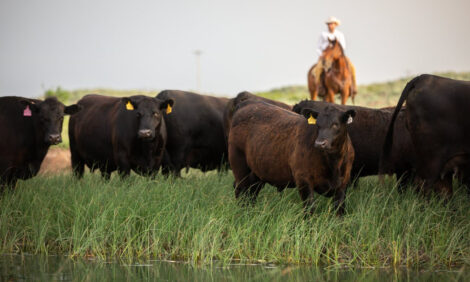



After the Ban: The Japanese Market for U.S. Beef
By Roxanne Clemens, Managing Director of MATRIC at Iowa State University. In the months following the reopening of the Japanese market to imports of U.S. beef on July 26, 2006, Japanese importers were unable to procure adequate supplies.Executive Summary
This paper discusses reasons for early supply shortages and some of the policy and trade issues that will affect demand for U.S. beef in the short to medium term. The paper also discusses current marketing efforts for domestic and imported beef, new marketing technologies, and general consumer trends. The information presented in this paper includes on-site observations and data from meetings with Japanese importers and retailers and industry experts during market research in Tokyo and Osaka in November 2006.Introduction
Japanese consumers are among the world’s most demanding in their expectations for safety, quality, taste, and value in the food products they purchase. Reminding these consumers that U.S. beef meets all these criteria and rebuilding demand after a two-and-a half-year absence from the market will require careful marketing, safety assurances, rebuilding of trade relationships—and adequate supplies. In the months following the reopening of the Japanese market to U.S. beef, importers were expressing frustration that they were unable to obtain enough U.S. beef to meet demand, even at the very low volumes needed for a slowly expanding, very cautious market.Perhaps with good reason, the shortage of eligible beef caught some industry participants by surprise. Following the December 2003 ban on U.S. beef after confirmation of a single case of bovine spongiform encephalopathy (BSE) in the United States, the Japanese government conducted their side of negotiations to reopen their market to U.S. beef in a politically charged environment under strong criticism from political opponents, the Japanese media, and consumer groups. Numerous surveys were published indicating that the majority of Japanese consumers would be unwilling to purchase U.S. beef when it reentered the market. Negative reports about the safety of U.S. beef and the U.S. export verification system gained steam when the market reopened on December 11, 2005, only to close again on January 20, 2006, after prohibited bovine materials were found in a shipment of U.S. veal. To some, Japanese reaction to the discovery of the banned materials seemed disproportionate to the event. But the Japanese government was facing harsh criticism from opponents claiming that the U.S. system was not failsafe and did not adequately protect Japanese consumers. Political opponents accused Japan’s prime minister, Shinzo Abe, of prioritizing political considerations rather than basing decisions in science, ignoring the safety of consumers, and moving too quickly to accept U.S. beef (CIDRAP 2006). From the U.S. perspective, the Japanese government was acting with extreme caution by insisting on stringent regulations and moving slowly to accept imports of U.S. beef.
Following another six months of negotiations and inspection of U.S. plants by Japanese officials, the Japanese market was again reopened to U.S. beef on July 26, 2006. Given the negative political and media focus on U.S. beef prior to the market reopening, it is not surprising that Japanese consumers were expressing caution about purchasing U.S. beef and that most supermarkets did not immediately carry U.S. beef. A survey conducted in mid-July 2006 revealed that only 1 of the 21 major food companies that responded planned to use U.S. beef immediately when the market reopened (USDA 2006d).
Once U.S. beef began to reach Japanese consumers, however, the Japanese media began to report on the strong acceptance of U.S. beef by some consumers. Costco and Zenshoku Co. received wide coverage for being the first supermarket and restaurant chain, respectively, to offer U.S. beef following the ban (Mainichi Daily News 2006). On September 18, Yoshinoya D&C Co. sold one million servings of gyudon (“beef bowl”) made with U.S. beef in just 10 hours before running out of U.S. beef. Newspapers reported that some customers had waited in long lines for Yoshinoya restaurants to open that day (China Daily 2006, USDA 2006d). These early reports of consumer confidence in U.S. beef were supported by results from taste tests in Japanese supermarkets and other venues where Japanese consumers eagerly sampled U.S. beef.
Rebuilding U.S. beef export volume to pre-ban levels will be a long process, but these initial successes were important signals to the Japanese consumers who were waiting to see what other consumers would do, and to the Japanese restaurateurs and retailers who were waiting to see whether their customers would accept U.S. beef. The successes also revealed that Japanese importers wanted more U.S. beef than was being supplied.
Now that U.S. beef has returned to the Japanese market, a variety of forces will drive demand, some of which will change over the next several months and some of which will affect beef imports into the foreseeable future. This paper discusses the market environment shortly after the ban was lifted and some of the domestic policies, trade policies, consumer issues, and marketing efforts that will affect supply and demand of domestic and imported beef in Japan in the near to medium term. The paper includes information from on-site observations, meetings with Japanese importers and retailers, and meetings with Japanese and U.S. industry experts during market research in Tokyo and Osaka in November 2006.
Further information
To read the full report please click here (PDF format)April 2007


